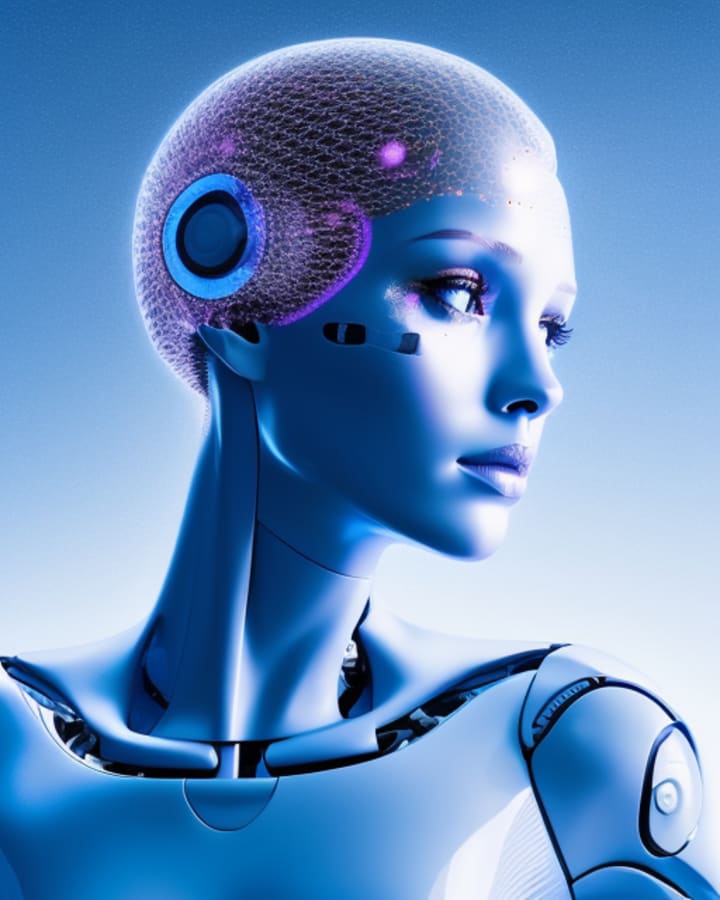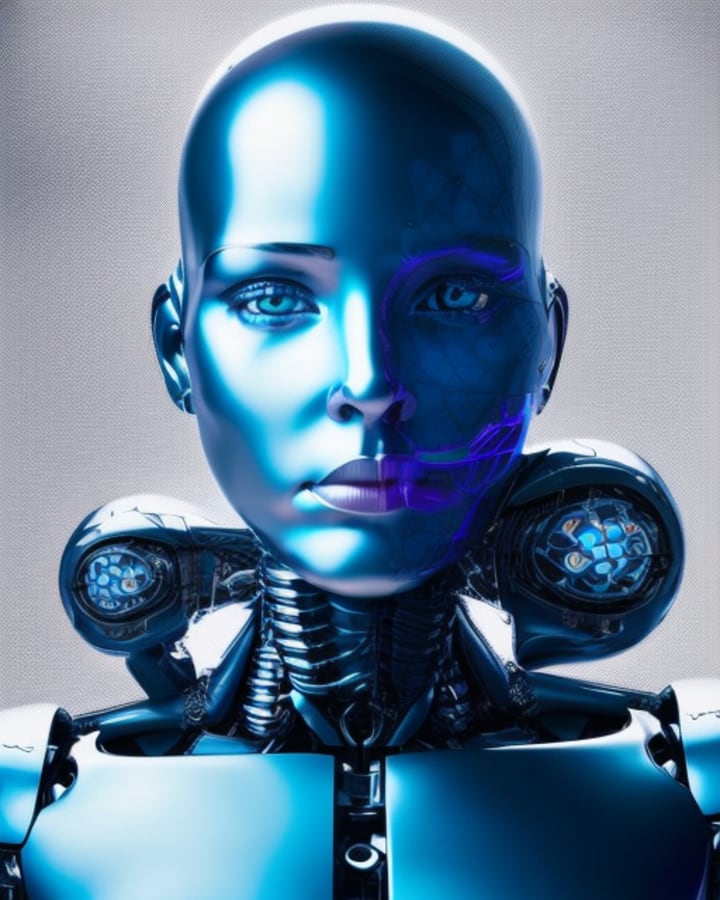The Development of AI and Its Unique Goals
A Fascinating Journey into the World of Technology

For optimum understanding and reading experience, here is a brief example of how this is formatted.
The title of each section;
A brief summary of the subject
The elaboration for those who are interested!
\\\ - . - /// Insert classy thought break ... Proceed.
In recent years, advancements in technology have brought us closer to the realization of artificial intelligence (AI). This rapidly evolving field has captured the imagination of tech enthusiasts around the world. In this blog post, we will delve into the development of AI, its unique goals, and explore the potential it holds for the future.

1. Understanding AI:
AI, or artificial intelligence, refers to the development of computer systems capable of performing tasks that typically require human intelligence.
Its purpose is to create machines that can learn, reason, and problem-solve, ultimately mimicking human cognitive abilities.
AI can be broadly classified into two categories: narrow AI, which is designed to perform specific tasks, and general AI, which aims to possess human-like intelligence across a wide range of activities.
AI, is a fascinating field that focuses on developing computer systems capable of performing tasks that traditionally require human intelligence. The purpose of AI is to create machines that can learn, reason, and problem-solve, essentially mimicking human cognitive abilities. Let's delve deeper into this concept by focusing on Machine Learning and Reasoning:
AI systems utilize machine learning algorithms to analyze data, identify patterns, and make predictions or decisions based on that data. This ability to learn from experience allows AI systems to continuously improve their performance over time.
Additionally, AI systems employ reasoning techniques to process information, make logical deductions, and solve complex problems. Through a combination of learning and reasoning, AI can handle tasks that would typically require human intelligence.
Now, lets look at; Narrow AI vs. General AI:
AI can be broadly classified into two categories: narrow AI and general AI.
- Narrow AI: Also known as "weak AI", narrow AI is designed to perform specific tasks or functions. These AI systems are highly specialized and excel in one particular area. Examples of narrow AI include voice assistants like Siri or Alexa, recommendation algorithms on streaming platforms, or autonomous vehicles.
- General AI: In contrast, general AI aims to possess human-like intelligence across a wide range of activities. This type of AI would have the ability to understand, learn, and apply knowledge in various domains, similar to how humans can adapt and learn new tasks. General AI is still largely theoretical and represents the ultimate goal of AI development.
While narrow AI has made significant advancements and is widely used today, achieving general AI remains a complex challenge that researchers are actively working on.
In conclusion of this first section; AI endeavors to develop computer systems capable of emulating human intelligence to learn, reason, and solve complex problems. It is divided into narrow AI, which specializes in specific tasks, and general AI, which aims to possess human-like intelligence across a wide range of activities. The progress made in AI has revolutionized various industries and holds promise for even greater advancements in the future!

2. The Evolution of AI:
It may come as a surprise to know that the roots of AI can be traced back to the 1950s when the field of AI research was established. Early AI systems focused on logical reasoning and rule-based approaches, but progress was slow due to limited computational power.
The advent of machine learning in the 1980s revolutionized the field, allowing computers to learn from data and improve their performance over time.
Recent breakthroughs in deep learning, neural networks, and big data have propelled AI to new heights, enabling it to surpass human performance in certain tasks.
\\\ - . - /// Still here? ... Staaay with me. Tech is a fun subject. Don't sleep on me like you did your history class.
The development of AI has been a fascinating journey, with significant milestones along the way. Let's explore the evolution of AI over the years:
- 1950s: The birth of AI research
The field of AI was officially established in the 1950s, laying the foundation for the exploration of artificial intelligence. Early researchers aimed to create machines that could simulate human intelligence and perform tasks that required human-level thinking.
- Early AI systems: Logical reasoning and rule-based approaches
In the early years of AI, researchers focused on developing AI systems based on logical reasoning and rule-based approaches. These systems used predefined rules and logical deductions to solve problems. However, progress was slow due to limited computational power and the complexity of real-world problems.
- 1980s: The advent of machine learning
The 1980s brought a significant milestone in AI with the introduction of machine learning. This breakthrough revolutionized the field by enabling computers to learn from data and improve their performance over time without being explicitly programmed. Machine learning algorithms, such as decision trees and neural networks, allowed AI systems to recognize patterns, make predictions, and adapt to new information.
- Recent breakthroughs: Deep learning, neural networks, and big data
In recent years, AI has experienced exponential growth, thanks to breakthroughs in deep learning, neural networks, and the availability of big data. Deep learning, a subset of machine learning, involves training neural networks with multiple layers to process and understand complex data. This approach has led to remarkable advancements in computer vision, natural language processing, and speech recognition.
Moreover, the abundance of big data, coupled with advancements in data storage and processing, has fueled AI development. The ability to analyze vast amounts of data has empowered AI systems to extract valuable insights and make more accurate predictions, surpassing human performance in various tasks.
Today, AI is being applied in diverse fields, including healthcare, finance, transportation, and more. It continues to evolve rapidly, with ongoing research and advancements pushing the boundaries of what AI can achieve.
In conclusion of section 2, the evolution of AI spans several decades, starting with early rule-based approaches and logical reasoning. The advent of machine learning in the 1980s revolutionized the field, allowing computers to learn from data. Recent breakthroughs in deep learning, neural networks, and big data have propelled AI to new heights, enabling it to surpass human performance in certain tasks (Scary, impressive and cool). The future of AI holds even more exciting possibilities as researchers continue to push the boundaries of this rapidly evolving field.

3. Goals and Applications of AI:
Enhancing Efficiency: AI aims to automate repetitive tasks, thereby increasing productivity and efficiency in various industries.
Improving Decision-Making: AI algorithms can analyze vast amounts of data, providing valuable insights for better decision-making in fields like finance, healthcare, and marketing.
Advancing Healthcare: AI can assist in diagnosing diseases, developing personalized treatment plans, and analyzing medical images, leading to improved patient care.
Enhancing User Experience: Through natural language processing and machine learning, AI can understand human inputs, enabling personalized recommendations and intuitive virtual assistants.
Enabling Autonomous Systems: AI plays a crucial role in developing self-driving cars, drones, and robots, leading to advancements in transportation and automation.
Ensuring Safety and Security: AI algorithms can detect fraudulent activities, identify potential security threats, and enhance cybersecurity defenses.
AI has a wide range of goals and applications, each with the aim of leveraging its capabilities to improve various aspects of our lives. Let's explore some of the key goals and applications of AI:
- Enhancing Efficiency:
One of the primary goals of AI is to automate repetitive tasks, freeing up human resources and increasing productivity and efficiency in various industries. By automating routine processes, AI allows businesses to streamline operations and focus on more complex and strategic tasks.
- Improving Decision-Making:
AI algorithms have the ability to analyze vast amounts of data at high speeds, extracting valuable insights that can aid in better decision-making. In finance, for example, AI can analyze market trends and predict investment opportunities. In healthcare, AI can assist in diagnosing diseases, developing personalized treatment plans, and even analyzing medical images for more accurate diagnoses.
- Advancing Healthcare:
AI has the potential to revolutionize healthcare by assisting medical professionals in various ways. From diagnosing diseases and recommending personalized treatment plans to analyzing medical images and monitoring patient health, AI can significantly improve patient care and outcomes. Additionally, AI-powered wearable devices can track health data, providing real-time insights and preventive measures.
- Enhancing User Experience:
AI technologies, such as natural language processing and machine learning, have the ability to understand human inputs, enabling personalized recommendations and intuitive virtual assistants. From personalized product suggestions on e-commerce platforms to voice-controlled virtual assistants like Siri and Alexa, AI enhances user experiences by adapting to individual preferences and needs.
- Enabling Autonomous Systems:
AI plays a crucial role in developing autonomous systems, such as self-driving cars, drones, and robots. By combining AI algorithms with sensors, these autonomous systems can navigate and interact with the environment, leading to advancements in transportation, logistics, and automation. Self-driving cars, for instance, have the potential to reduce accidents and transform the way we commute.
- Ensuring Safety and Security:
AI algorithms can be trained to detect patterns and anomalies, making them valuable tools in ensuring safety and security. AI-powered systems can identify fraudulent activities, such as credit card fraud or identity theft, in real-time. Additionally, AI can be used for video surveillance, facial recognition, and threat detection, helping enhance security measures.
In conclusion to section 3, AI has a wide array of goals and applications that aim to improve efficiency, decision-making, healthcare, user experience, autonomous systems, and safety and security. As AI technology continues to advance, its potential for positive impact across various industries becomes more evident, promising a future where AI can augment human capabilities and lead to significant advancements in our society.

4. Challenges and Ethical Considerations:
Data Bias: AI systems can be influenced by biased data, leading to unfair or discriminatory outcomes. Ensuring unbiased and diverse datasets is crucial.
Transparency and Accountability: The decision-making process of AI algorithms should be explainable, especially in critical areas like healthcare and finance.
Job Displacement: The rise of AI may lead to job displacement in certain sectors. Preparing for this transition and re-skilling the workforce is essential.
Ethical Use: Addressing ethical concerns surrounding AI, such as privacy, surveillance, and the potential misuse of AI technology, is crucial for responsible development.
\\\ - . - /// This section is a longer read but the last one!
Challenges and Ethical Considerations:
While the development of AI brings immense potential, it also presents challenges and ethical considerations that need to be addressed. Let's explore some of these challenges:
- Data Bias:
AI systems learn from data, and if the data used for training is biased or lacks diversity, it can lead to unfair or discriminatory outcomes. Ensuring unbiased and diverse datasets is crucial to prevent perpetuating biases. This requires careful data collection, preprocessing, and ongoing monitoring to mitigate any bias that may emerge.
- Transparency and Accountability:
In critical areas like healthcare and finance, the decision-making process of AI algorithms should be explainable and transparent. The "black box" nature of some AI systems can raise concerns about accountability and trust. Developing methods to interpret and explain the reasoning behind AI decisions is essential to build confidence in the technology and ensure responsible use.
- Job Displacement:
The rise of AI and automation may lead to job displacement in certain sectors. As AI takes over repetitive and manual tasks, it can impact employment opportunities for some workers. Preparing for this transition and re-skilling the workforce with new skills that are in demand in the AI-driven economy is crucial to minimize the negative impact and foster a smooth transition.
- Ethical Use:
AI raises ethical concerns regarding privacy, surveillance, and the potential misuse of technology. To ensure responsible development, it is essential to establish ethical guidelines and regulations that govern the use of AI. Protecting user privacy, ensuring data security, and addressing potential biases and discrimination are paramount in the ethical deployment of AI systems.
As AI continues to advance, it is vital to address these challenges and ethical considerations proactively. By doing so, we can harness the transformative potential of AI while ensuring that it is developed and used in a responsible and beneficial manner, with the goal of creating a better future for all.
In conclusion to section 4, the development of AI comes with challenges and ethical considerations. Addressing issues such as data bias, transparency, job displacement, and ethical use is crucial for responsible AI development. By recognizing and actively working to mitigate these challenges, we can harness the immense potential of AI to reshape industries and improve our lives while ensuring a fair and ethical implementation.
The development of AI has come a long way, and its unique goals hold immense potential for reshaping various industries. From enhancing efficiency to advancing healthcare and enabling autonomous systems, AI is set to transform the way we live and work. However, it is crucial to address the challenges and ethical considerations associated with AI to ensure its responsible and beneficial integration into our lives. Exciting times lie ahead as we continue to witness the incredible progress in this fascinating field.
\\\ - . - /// 2280 Words later, you made it -- We made it. Thank you all for your outstanding support, for taking the time to read this and for your time. Stay safe out there!
This is a coupled article, my second article will be on Virtual Reality so please give me a follow and stay tuned!
About the Creator
Kaliyah Myers
"Change is imperative. But the kind of change is the most important detail."
In being a writer, I hope to share something relatable and adventurous that you can love too.






Comments
There are no comments for this story
Be the first to respond and start the conversation.